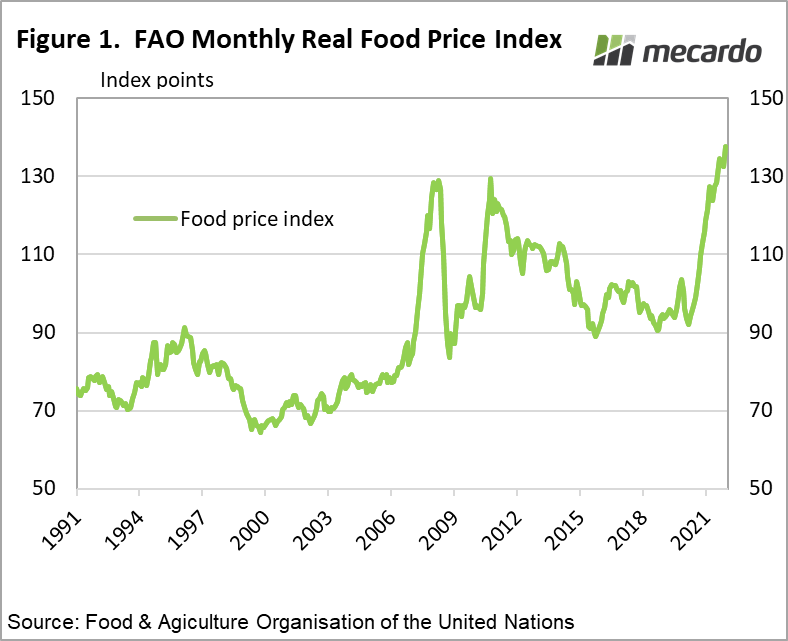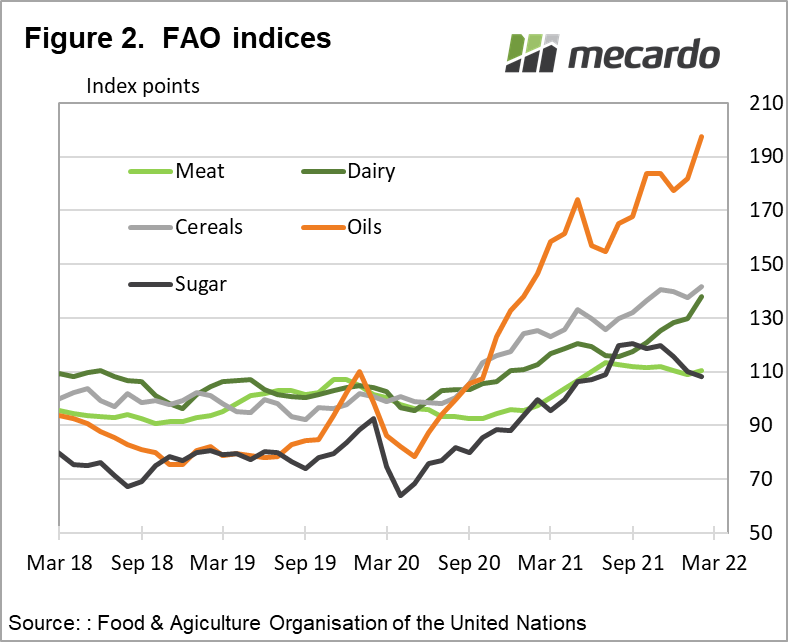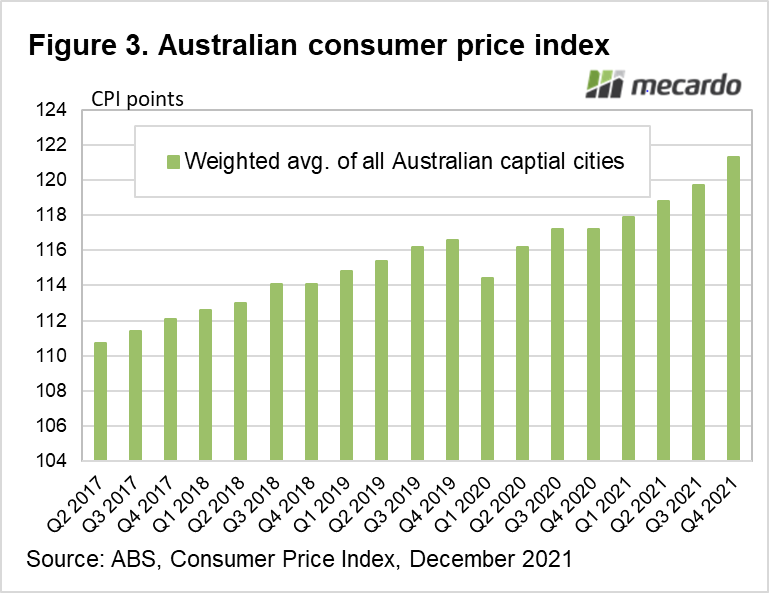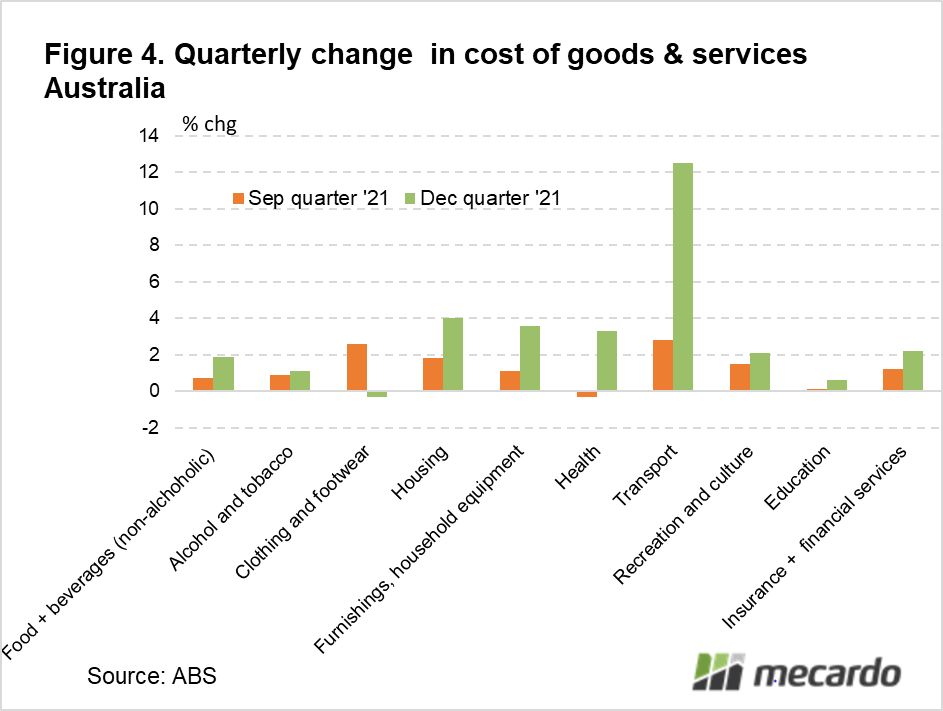It won’t come as a surprise to readers that most agricultural commodities have increased in $ value both here in Australia and internationally over the past two years, driven up by low supply, Covid-19 impacts across the globe, followed by a surge in freight and shipping costs and finally by the Russian war on Ukraine. In what seems to be a never-ending cycle of ‘black swan’ events, this article aims to take a snapshot of the rise in food prices, and the impact on consumption.
The globally recognised gauge for world food prices is the FAO Food Price Index (FFPI), a measure of the monthly change in international prices of a basket of food commodities. The five commodity group price indices in the ‘basket’ are meat, dairy, cereals, oils & sugar, weighted by the average export shares of each of the groups. To put the recent price hikes into perspective, the FFPI has nearly doubled since the index began in 1990.It was 77.6 back then and in February 2022 it was at a record 137.6 (figure 1). The rise in February was largely led by increases in the vegetable oil and dairy price sub-indices while the sugar price sub-index fell for the third consecutive month. The indices for cereals & meats have both risen, the meat index to new all-time highs, while the cereal index has been higher in 2008 (figure 2).
In Australia, we have seen the price of many agricultural commodities rise significantly over the past two years which is good for producers who have been able to take advantage of the price hikes. However, the opposite can be said for consumers of commodities and everyday Australians, as inflation has outpaced wage growth (according to the ABS, overall inflation was 3.5%last year, while wages increased by only 2.1%). As the cost of nearly all goods and services rise (figure 3 & 4), compounded by the high oil prices (see figure 2 ‘transport’ – and this is before the Russian invasion of Ukraine), we might not get the post-pandemic economic rebound many businesses were hoping for in the near future, as discretionary spending amounts will likely shrink and we may therefore see a reduction in food service demand and ‘luxury’ food items.
The government’s recent reduction of the fuel excise by half to 22.1 cents per litre should take some of the pressure off Australian families and business, I’ve noticed a drop in the price in some service stations around Victoria already. However, with most economists predicting the Reserve Bank will announce its first lift in official interest rates in more than 11 years, despite the fuel excise reduction, there may be more hip-pocket pain in 2022 yet.
Fortunately for Aussie farmers, most of our main commodities are still exported overseas, and with ongoing supply concerns globally the demand outlook is as strong if not stronger than during the pandemic, as governments attempt to secure essential food items for their populations due to geopolitical insecurities. 2008 is still fresh in the mind of many governments, when we saw riots occurring in many countries as a result of the global financial crash pushing food prices to what was then record heights. (figure 1)
What does it mean?
The current environment won’t impact demand across commodities equally. Tightening of household budgets and less discretionary expenditure is likely to turn consumers towards lower-cost products, at the expense of premium, high quality foods and goods. Government measures including tariffs & import/export controls that aim to secure supply of commodities and reduce price pressure are already shifting trade dynamics and will undoubtedly have long-lasting effects.
Have any questions or comments?
Key Points
- All FAO food indices have risen even higher on the already high pandemic-induced surge of early 2020 and have generally continued to trend higher in 2022.
- Oilseeds have increased the most recently, and have been the biggest driver in average food prices internationally over the past two years.
- Increase in the cost of oil and fuel is dragging most food commodities higher both in Australia & internationally.
Click on figure to expand
Click on figure to expand
Click on figure to expand
Data sources: ICS, Mecardo





